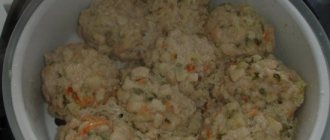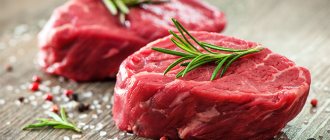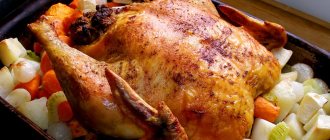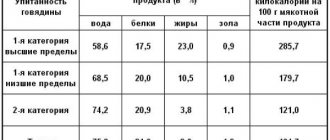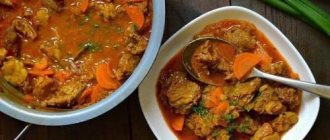Chicken broth is eaten almost all over the world. Due to its beneficial properties, it is included in the treatment of colds, respiratory diseases, and gastrointestinal problems, and due to its low nutritional value, this product is the basis of most diets.
To calculate the nutritional value of a dish, the recipe, fat content of the meat, and even the conditions in which the poultry was raised are taken into account.
- Chicken broth calories
- Factors affecting the calorie content of chicken broth
- How to calculate the calorie content of broth with different ingredients
- How to reduce the calorie content of broth?
- How to make broth really tasty?
- Chicken broth recipe for weight loss
- Chicken broth in cooking
- Composition and beneficial properties of chicken broth
- Is there any harm in eating chicken broth?
Calorie content of broth
When preparing broth, housewives quite often ask themselves how many calories are in the broth? The answer to this question is not always unambiguous, since the calorie content of the broth is directly affected not only by the product from which the broth is prepared, but also by its quantity.
Among all the famous first courses, broth is one of the most healthy and dietary. This is explained by the fact that, despite the calories in the broth, it has a general healing effect on the entire human body. In cooking, it is the basis for soups, sauces and many other dishes. Broth is not just a liquid. It combines many vitamins and minerals (eg magnesium, B vitamins, phosphorus, zinc).
The broth can be made from a variety of products, which directly affects the calorie content of the broth. The most high-calorie ones are considered to be those prepared from fatty varieties of fish and meat. The amount of calories will be minimal in vegetable and mushroom broth. However, it should be remembered that, despite how many calories are in the broth, it still remains a very healthy and indispensable product in every person’s daily diet.
Let's take a closer look at the positive properties of broth:
- It facilitates the course of colds and viral diseases;
- Restores normal functioning of the body after the completion of a particular disease;
- Normalizes blood pressure and stomach function;
- Due to the certain calorie content of the broth, it helps improve heart function;
- Thins the blood and reduces the likelihood of blood clots.
Chicken broth is considered the healthiest of all types of broth, since this broth has a fairly low calorie content. As a result of the fact that it normalizes the functioning of the gastrointestinal tract, strengthens teeth and bones, improves memory, heals wounds, suppresses a person’s depressive state, chicken broth is prepared more often than other varieties of such dishes. In addition, people with diabetes need to consume such a dish, because chicken broth normalizes blood sugar levels.
When introducing low-calorie broths into your daily diet, you should remember that along with a large number of advantages, they also have some negative qualities. It is forbidden to use them for those people who have problems with normal metabolic processes in the body, have an ulcer or gastritis with high acidity. The reason for such prohibitions is that broth increases acidity in the stomach and also provokes a more abundant secretion of gastric juice.
Broth: what are the benefits for the body?
First of all, it is worth noting the nutritional value of the broth . It plays the role of an energy drink, regardless of whether it is beef or chicken. In countries with harsh cold climates, people cannot go a day without meat broths.
Due to the global trend towards a sedentary lifestyle and excess weight gain, the benefits of broth for the body are revealed only with proper preparation and use of high-quality and dietary meat. This broth has low calorie content and does not lose nutritional value.
People who are dehydrated due to illness (especially colds and flu) receive the greatest benefit from consuming broths. Moderate consumption of broths promotes a speedy recovery, rehabilitation after ARVI and strengthens the immune system.
Other beneficial properties of broths:
• improve the functioning of the gastrointestinal tract, are useful for digestion;
• restore fluid balance in the body;
• reduce hemoglobin levels;
• normalize metabolism and promote tissue regeneration;
• reduce the level of “bad” cholesterol;
• strengthen the immune system;
• participate in the construction of bone and nerve tissues;
• improve the condition of the skin, hair and nails, preventing the aging of the body.
Calorie content of broth and secrets of its preparation
As noted earlier, the calorie content of the broth depends on the product from which it is going to be prepared. The basis for any broth is pure water, which does not contain any calories at all, and a pre-prepared food product (meat, vegetables, fish or chicken).
The main secret of preparing healthy broth (in this case, the number of calories in the broth will be minimal) is that it is best to cook it in second water. This means that the water in which the meat or chicken boiled must be drained and the pan filled with new, clean water, in which the product must be cooked until done. As a result of the operations performed, the calorie content of the broth will be very small, since excess fat is removed from it.
What is bone broth?
Bone broth is a broth made from bones, most often pre-roasted/baked in the oven.
When they are cooked for a long time, from 6-7 hours or more, the collagen protein they contain (the basis of the body’s connective tissue, which ensures its strength and elasticity) passes into water. The result is a particularly valuable - especially rich in taste and aroma, opaque - bone broth. Nowadays - the time of celebration of healthy lifestyle - bone broth is very fashionable and in demand, but the recipe for its preparation is of course not new! Even 2500 years ago, such broth was used in Chinese medicine to maintain the health of the kidneys and digestive organs.
How many calories are in the broth?
- 100 g of chicken broth contains 2 g of protein, 0.5 g of fat, 0.3 g of carbohydrates. The energy value of such a product is 15 kcal;
- 100 g of mushroom broth contains 0.2 g of protein, 0.02 g of fat, 0.85 g of carbohydrates. Energy value – 4.28 kcal;
- Per 100 g of vegetable broth there are 0.65 g of protein, 0.18 g of fat, 2.36 g of carbohydrates. Energy value does not exceed 12.85 kcal;
- In 100 g of fish broth from low-fat fish (for example, hake), the amount of protein is 4.49 g, fat - 0.61 g, carbohydrates - 0.71 g. Energy value - 26.15 kcal;
- Pork broth contains the most calories. 100 g of this dish contains 23.15 g of protein, 8 g of fat, and no carbohydrates. Energy value – 40 kcal;
- The calorie content of beef broth may vary. If the broth is cooked from the pulp, then per 100 g of the finished dish there will be 2.3 g of proteins, 1.1 g of fat, 2.6 g of carbohydrates. The energy value in this case will not exceed 28.8 kcal.
The calorie content of meat broth can be slightly reduced (to 28.6 kcal) if you cook it on a beef bone. In this case, 100 g of broth will contain 4 g of protein, 1.3 g of fat, 0.2 g of carbohydrates, and the energy value will be 28.6 kcal.
Based on this, we can conclude that the calorie content of meat broth (pork) will be the highest, while the calories in mushroom broth will be extremely low.
Harmful properties of beef broth
Beef broth has an excellent effect on the stomach and normalizes digestive processes in it. But only meat broth has these properties. Some people make broth from cubes. The calorie content of cubed broth is also very low, but it contains a large amount of flavorings, salt and food additives that can lead to gastritis or even the formation of stomach ulcers.
Therefore, such cubes should never be used. If you don't have time to cook fresh beef broth every day, cook it every few days. The taste of the product will become slightly worse, but the beneficial properties and calorie content of beef broth will not change.
Those who are too afraid for their waistline should know that from time to time it is possible and even necessary to pamper yourself with meat broth, since this will saturate the body with the required amount of proteins and beneficial microelements.
How to make broth really tasty?
Due to the variety of recipes for preparing broths, they are used in cooking to create soups, sauces, risottos and gravies. To extend the storage time of the finished broth, it must first be cooled. Cold water or ice, which you need to cover the container with the broth, will help speed up this process.
You can make the broth more healthy if you do not salt it at all or limit it to one teaspoon of salt.
If you want to get a really tasty and clear broth, the calorie content of which will be low, you should cook it over very low heat, remembering to constantly skim the foam from it during cooking. You can also add bay leaf, black pepper and a small amount of dried herbs during the cooking process.
It is best to use pre-strained broth. To do this, the first thing is to remove meat, vegetables or fish from it. After this, take gauze or a colander and thus obtain an absolutely clean finished product.
Source: https://www.neboleem.net/kalorijnost-bulona.php
Calorie content of broths
As for the calorie content of liquid broth, it depends on the main ingredient. The basis of any broth is water, which has no calories.
If chicken meat is the main component, then 100 g of liquid broth will contain 15 kcal, of which 2-7 are proteins, 0.5 are fats and 0.3 g are carbohydrates.
100 g of vegetable liquid broth contains about 13 kcal, of which 0.7 are proteins, 0.18 are fats and about 2.5 g are carbohydrates.
Fish broth is considered more nutritious. 100 g of broth contains 44 kcal.
Calories in beef broth on the bone. Chemical composition and nutritional value.
Nutritional value and chemical composition of “beef broth on the bone.”
The table shows the nutritional content (calories, proteins, fats, carbohydrates, vitamins and minerals) per 100 grams of edible portion.
| Nutrient | Quantity | Norm** | % of the norm in 100 g | % of the norm in 100 kcal | 100% normal |
| Calorie content | 28.6 kcal | 1684 kcal | 1.7% | 5.9% | 5888 g |
| Squirrels | 4 g | 76 g | 5.3% | 18.5% | 1900 g |
| Fats | 1.3 g | 56 g | 2.3% | 8% | 4308 g |
| Carbohydrates | 0.2 g | 219 g | 0.1% | 0.3% | 109500 g |
The energy value of beef broth on the bone is 28.6 kcal.
Primary Source: Created in the application by the user. Read more.
** This table shows the average levels of vitamins and minerals for an adult. If you want to know the norms taking into account your gender, age and other factors, then use the “My Healthy Diet” application.
health-diet.ru
Chicken broth calories
The nutritional value of chicken broth depends on the ingredients; yushka accounts for 20-100 kcal per 100 grams. Low calorie content is typical for empty decoction of bones and cartilage of broiler birds - 20-25 kcal.
The fattest and most harmful part of the chicken is the skin. Antibiotics and hormones on which the bird grew up are deposited in it.
BZHU content (per 100 g):
- proteins – 2-3 g;
- fats – 0.5-1.5 g;
- carbohydrates – 0.3-3.5 g.
The percentage ratio of BZHU is 34: 64: 3.
Factors affecting the calorie content of chicken broth
The nutritional value is primarily influenced by which parts of the broiler were first cooked. A traditional ancient recipe in Europe is considered to be yushka made from poultry cartilage and bones.
Now housewives add finely chopped herbs and vegetables, which increases the calorie content of the broth.
In order to understand how the fat content of a certain part of the bird affects the richness, it is enough to study the table of the value of the individual components of the carcass:
| Part | Calorie content of raw meat per 100 g, kcal | Calorie content of boiled meat per 100 g, kcal |
| Breast | 113 | 95 |
| Hip | 185 | 175 |
| Ham | 195 | 185 |
| Wings | 222 | 166 |
| Necks | 297 | 175 |
| Backs | 319 | 160 |
The nutritional value varies depending on the cooking time, the container in which it was cooked (whether the lid is open), and the recipe. If the first foam was removed, the water was drained or diluted, then the first will receive a minimum of nutritional value and calories.
The longer the broth boils, the lower the nutritional value will be.
Important! The main factor influencing oiliness is the presence of skin. If the chicken has been skinned and washed in advance, then the nutritional value of the broth is reduced by 30-50%.
Calories Beef Broth. Chemical composition and nutritional value.
Nutritional value and chemical composition of "Beef broth".
The table shows the nutritional content (calories, proteins, fats, carbohydrates, vitamins and minerals) per 100 grams of edible portion.
| Nutrient | Quantity | Norm** | % of the norm in 100 g | % of the norm in 100 kcal | 100% normal |
| Calorie content | 130 kcal | 1684 kcal | 7.7% | 5.9% | 1295 g |
| Squirrels | 7 g | 76 g | 9.2% | 7.1% | 1086 g |
| Fats | 2 g | 56 g | 3.6% | 2.8% | 2800 g |
| Carbohydrates | 20 g | 219 g | 9.1% | 7% | 1095 g |
The energy value of beef broth is 130 kcal.
Primary Source: Created in the application by the user. Read more.
** This table shows the average levels of vitamins and minerals for an adult. If you want to know the norms taking into account your gender, age and other factors, then use the “My Healthy Diet” application.
health-diet.ru
How to calculate the calorie content of broth with different ingredients
A simple way to calculate the nutritional value of the finished chicken broth is to multiply the nutritional value of the raw part of the carcass by a factor of 0.9.
To find out how many kilocalories are in a pure broth, subtract the calorie content of the boiled part from the calorie content of the raw part of the chicken, multiply the result by the mass of meat and divide by the volume of water.
If other ingredients were used, the formula will help calculate the nutritional value per 100 g: (kcal of raw meat + kcal of vegetables + ...) / (weight of meat (g) + weight of vegetables (g) + ... + volume of water (ml)).
Beef broth recipe. Calorie, chemical composition and nutritional value.
Nutritional value and chemical composition of "Beef broth".
The table shows the nutritional content (calories, proteins, fats, carbohydrates, vitamins and minerals) per 100 grams of edible portion.
| Nutrient | Quantity | Norm** | % of the norm in 100 g | % of the norm in 100 kcal | 100% normal |
| Calorie content | 17.7 kcal | 1684 kcal | 1.1% | 6.2% | 9514 g |
| Squirrels | 2.767 g | 76 g | 3.6% | 20.3% | 2747 g |
| Fats | 0.731 g | 56 g | 1.3% | 7.3% | 7661 g |
| Water | 96 g | 2273 g | 4.2% | 23.7% | 2368 g |
| Vitamins | |||||
| Vitamin B1, thiamine | 0.004 mg | 1.5 mg | 0.3% | 1.7% | 37500 g |
| Vitamin B2, riboflavin | 0.017 mg | 1.8 mg | 0.9% | 5.1% | 10588 g |
| Vitamin B4, choline | 10.65 mg | 500 mg | 2.1% | 11.9% | 4695 g |
| Vitamin B5, pantothenic | 0.076 mg | 5 mg | 1.5% | 8.5% | 6579 g |
| Vitamin B6, pyridoxine | 0.061 mg | 2 mg | 3.1% | 17.5% | 3279 g |
| Vitamin B9, folates | 1.279 mcg | 400 mcg | 0.3% | 1.7% | 31274 g |
| Vitamin B12, cobalamin | 0.396 mcg | 3 mcg | 13.2% | 74.6% | 758 g |
| Vitamin E, alpha tocopherol, TE | 0.091 mg | 15 mg | 0.6% | 3.4% | 16484 g |
| Vitamin H, biotin | 0.457 mcg | 50 mcg | 0.9% | 5.1% | 10941 g |
| Vitamin RR, NE | 1.2258 mg | 20 mg | 6.1% | 34.5% | 1632 g |
| Macronutrients | |||||
| Potassium, K | 20.29 mg | 2500 mg | 0.8% | 4.5% | 12321 g |
| Calcium, Ca | 5.16 mg | 1000 mg | 0.5% | 2.8% | 19380 g |
| Magnesium, Mg | 3.29 mg | 400 mg | 0.8% | 4.5% | 12158 g |
| Sodium, Na | 5.27 mg | 1300 mg | 0.4% | 2.3% | 24668 g |
| Sera, S | 35.92 mg | 1000 mg | 3.6% | 20.3% | 2784 g |
| Phosphorus, Ph | 19.7 mg | 800 mg | 2.5% | 14.1% | 4061 g |
| Chlorine, Cl | 10.26 mg | 2300 mg | 0.4% | 2.3% | 22417 g |
| Microelements | |||||
| Iron, Fe | 0.326 mg | 18 mg | 1.8% | 10.2% | 5521 g |
| Yod, I | 1.1 mcg | 150 mcg | 0.7% | 4% | 13636 g |
| Cobalt, Co | 1.065 mcg | 10 mcg | 10.7% | 60.5% | 939 g |
| Manganese, Mn | 0.0068 mg | 2 mg | 0.3% | 1.7% | 29412 g |
| Copper, Cu | 28.25 mcg | 1000 mcg | 2.8% | 15.8% | 3540 g |
| Molybdenum, Mo | 1.766 mcg | 70 mcg | 2.5% | 14.1% | 3964 g |
| Fluorine, F | 100.91 mcg | 4000 mcg | 2.5% | 14.1% | 3964 g |
| Chromium, Cr | 1.25 mcg | 50 mcg | 2.5% | 14.1% | 4000 g |
| Zinc, Zn | 0.4932 mg | 12 mg | 4.1% | 23.2% | 2433 g |
The energy value of beef broth is 17.7 kcal.
Primary Source: Created in the application by the user. Read more.
** This table shows the average levels of vitamins and minerals for an adult. If you want to know the norms taking into account your gender, age and other factors, then use the “My Healthy Diet” application.
health-diet.ru
How to reduce the calorie content of broth?
For a dietary dish, carcasses with the lowest fat content and calorie content (breasts, thighs, wings) are selected. It is better to refrain from adding potatoes, crackers, and eggs.
When cooking, it is recommended to use a minimum of salt and seasonings: they delay the removal of water from the body and accumulate it in soft tissues.
There are unspoken rules that help reduce calories:
- Before cooking, the bird is skinned and excess fat is removed from the carcass;
- after boiling, the foam is removed, harmful substances and fats rise to the top;
- It is recommended to drain the first broth, then fill the chicken with clean water and cook until tender.
How to make broth really tasty?
Of course, the most delicious rich soup is made from different parts of the chicken. The meat is boiled with the bone, preferably with cartilage. The foam is removed, it adds bitterness.
If you are not cooking a separate dish, but a basis for further manipulations (preparing sauces, dressings, pastas), then cooks recommend adding cheese crusts. Place them in cold water and keep until ready.
If there are vegetables in the soup, then add them according to the duration of cooking. The one that will require more cooking time goes first. For example, first add legumes, potatoes, mushrooms, and after 15-20 minutes add bell peppers, carrots, and onions. At the end - asparagus, celery, zucchini.
Important! To achieve a pleasant aroma, it is recommended to add dry herbs, bay leaves, and high-quality spices. You don't need a lot of salt, especially if cheese has already been added.
Chicken broth in cooking
Many world cuisine recipes are based on this product. In addition to soups and other liquid dishes, the broth is also used for sauces, potato and vegetable purees, and jellied meats.
Based on it, cereals, pasta are cooked, and dressings are created for them. Housewives use it as a semi-finished product: if frozen, it will not lose its beneficial properties for 5-6 months.
For aroma and richness, it is customary to add bay leaves, allspice, and the usual spices or herbs: rosemary, basil, parsley, dill. Carrots, potatoes, and onions will make the broth a complete soup. You can experiment by adding raw or boiled eggs, tomatoes, bell peppers, meatballs, rice cutlets, tomatoes and pickles.
Broth for diet soup
Fats are the basis for the preparation of many dietary soups: cereal, vegetable and meat puree soups. Strong meat extracts are necessary for weakened patients to stimulate appetite, and mushroom extracts are used for reduced secretion of gastric juice.
Sea fish soup is useful for iodine deficiency in the body.
Vegetable decoctions include water-soluble vitamins and minerals, which are essential for hypertension, atherosclerosis, and obesity. Any broth does not contain enough nutrients necessary for the body. Therefore, they are not recommended for long-term consumption as independent dishes; soups are prepared on their basis. You can read about it in our publication.
Beef broth is the basis for preparing both first and second courses, as well as sauces, casseroles, etc. Depending on what dish you plan to serve, meat broth requires careful selection of the type of beef. As an independent dish, beef broth is best prepared from young veal. In addition to the fact that the soup has a pleasant smell and taste, it has a lot of substances useful for the human body: essential amino acids, proteins. The fat content in the dish is significantly lower than in pork, lamb or duck broth. The easy digestion of beef broth classifies it as a dietary cuisine. Useful and desirable for adults in the recovery period after surgery. Patients with digestive tract problems, excess weight and malaise can count on healing with beef broth in addition to treatment. Children enjoy drinking the aromatic brew. The benefits of meat broth will be double if you include vegetables in the dish. In addition to zinc, magnesium, and B vitamins, vegetables will add many other minerals and vitamins to beef soup, making it a liquid substitute for vitamin-mineral pills. The vitamins in the broth are of natural origin, which improves their absorption by the human body.
Composition and beneficial properties of chicken broth
Pure broth, without adding spices or additional ingredients, absorbs microelements and vitamins contained in chicken. It is enriched with vitamins A, C, D, PP, H, B; minerals: iodine, calcium, cobalt, fluorine, boron, phosphorus, potassium, sodium, copper. The composition includes the following elements: water, cholesterol, dietary fiber, ash, starch, organic compounds.
It has long been believed that chicken soup overcomes colds: it soothes irritated mucous membranes, thins mucus, warms the bronchi, tones muscles, and invigorates.
Beef broth recipe. Calorie, chemical composition and nutritional value.
Beef broth
is rich in vitamins and minerals such as: vitamin B2 - 12.7%, vitamin B5 - 15.2%, vitamin B12 - 101.2%, vitamin PP - 13.2%, cobalt - 15.2%, copper - 11.6%, selenium - 12%, chromium - 17.6%
- Vitamin B2
is involved in redox reactions, helps to increase the color sensitivity of the visual analyzer and dark adaptation. Insufficient intake of vitamin B2 is accompanied by impaired condition of the skin, mucous membranes, and impaired light and twilight vision. - Vitamin B5
is involved in protein, fat, carbohydrate metabolism, cholesterol metabolism, the synthesis of a number of hormones, hemoglobin, promotes the absorption of amino acids and sugars in the intestines, and supports the function of the adrenal cortex. A lack of pantothenic acid can lead to damage to the skin and mucous membranes. - Vitamin B12
plays an important role in the metabolism and transformation of amino acids. Folate and vitamin B12 are interconnected vitamins that are involved in hematopoiesis. A lack of vitamin B12 leads to the development of partial or secondary folate deficiency, as well as anemia, leukopenia, and thrombocytopenia. - Vitamin PP
is involved in redox reactions of energy metabolism. Insufficient vitamin intake is accompanied by disruption of the normal condition of the skin, gastrointestinal tract and nervous system. - Cobalt
is part of vitamin B12. Activates enzymes of fatty acid metabolism and folic acid metabolism. - Copper
is part of enzymes that have redox activity and are involved in the metabolism of iron, stimulates the absorption of proteins and carbohydrates. Participates in the processes of providing oxygen to the tissues of the human body. Deficiency is manifested by disturbances in the formation of the cardiovascular system and skeleton, and the development of connective tissue dysplasia. - Selenium
is an essential element of the antioxidant defense system of the human body, has an immunomodulatory effect, and is involved in the regulation of the action of thyroid hormones. Deficiency leads to Kashin-Beck disease (osteoarthritis with multiple deformities of the joints, spine and limbs), Keshan disease (endemic myocardiopathy), and hereditary thrombasthenia. - Chromium
is involved in the regulation of blood glucose levels, enhancing the effect of insulin. Deficiency leads to decreased glucose tolerance.
morehide
You can view a complete directory of the healthiest foods in the “My Healthy Diet” app.
health-diet.ru
Is there any harm in eating chicken broth?
Chicken broth is a strong allergen. It is important to carefully select a supplier, monitor the freshness and quality of the carcass: this will reduce the risk of harmful substances getting into the soup.
Extractive substances do not disintegrate and are not excreted; they are converted into salt crystals in urine. This aggravates the development of urolithiasis and gout. For young children, strong soup is heavy food.
Source: https://dietonika.com/dieticheskie-produkty/supy/kalorijnost-kurinogo-bulona.html


